Growing as an Artist: The Importance of Art Journals
Art is not just about the final piece; it’s about the journey, the process, and the exploration that leads to that masterpiece. One of the most powerful tools an artist can wield in their creative arsenal is the art journal. Think of it as a personal playground where your imagination can run wild, free from the constraints of expectation or judgment. In this digital age, where everything is often polished and curated, art journals offer a safe haven for raw creativity. They allow artists to experiment with new techniques, styles, and ideas without the pressure of producing something "perfect."
So, why are art journals so crucial for an artist's growth? Well, they serve multiple purposes. Firstly, they act as a canvas for experimentation, enabling artists to dabble in different mediums and approaches. Whether it's a splash of watercolor, a collage of magazine clippings, or a quick sketch, art journals encourage a playful mindset. This freedom can lead to unexpected discoveries and innovative solutions to creative blocks. It’s like giving your brain a workout, flexing those creative muscles until they’re strong and agile.
Moreover, art journals can be a powerful tool for self-reflection. As artists, we often pour our hearts into our work, but how often do we take the time to understand what we’re feeling or why we create? Journaling provides a unique space for processing thoughts and emotions. It can be therapeutic, helping us to navigate through our artistic highs and lows. By revisiting our entries, we can gain valuable insights into our artistic journey, recognizing patterns, fears, and triumphs that shape our work.
Additionally, art journals serve as a visual record of our progress. Imagine flipping through the pages of your past creations and witnessing your evolution as an artist. It’s incredibly motivating! You can see the shifts in your style, the improvement in your techniques, and the growth in your confidence. Keeping track of your artistic development in this way can ignite a fire within you to keep pushing forward. It’s a tangible reminder of how far you’ve come and a source of inspiration for where you want to go.
Art journals also play a significant role in goal-setting. By outlining your artistic aspirations within your journal, you create a roadmap for your creative journey. Whether you want to master a new technique, explore a different medium, or complete a series of works, writing these goals down can foster a sense of accountability. You can track your achievements and celebrate your successes, no matter how small. This practice not only keeps you motivated but also builds a sense of purpose in your art-making process.
Lastly, let’s not forget the importance of gathering inspiration and generating ideas. An art journal is the perfect place to collect snippets of inspiration—be it a color palette that catches your eye, a quote that resonates with you, or a photo that sparks an idea. By dedicating space in your journal to these inspirations, you create a treasure trove of ideas to draw from when you’re ready to start your next project. It’s like having a personal muse that you can revisit whenever you need a creative boost!
In conclusion, art journals are not just books filled with sketches and notes; they are essential companions in an artist’s journey. They foster creativity, encourage self-reflection, document progress, aid in goal-setting, and serve as a wellspring of inspiration. So grab a journal, let your creativity flow, and watch as you grow as an artist!
- What materials do I need to start an art journal?
You can start with just a simple notebook and some pencils. As you get more comfortable, you can experiment with paints, markers, and various papers. - How often should I journal?
There’s no right or wrong answer! Some artists journal daily, while others may do it weekly or whenever inspiration strikes. The key is consistency. - Can art journaling help with creative blocks?
Absolutely! The freedom of art journaling allows you to explore without the pressure of creating a finished piece, which can help break through creative blocks. - Do I have to show my art journal to anyone?
Not at all! Your journal is for you. It’s a personal space where you can express yourself freely without fear of judgment.
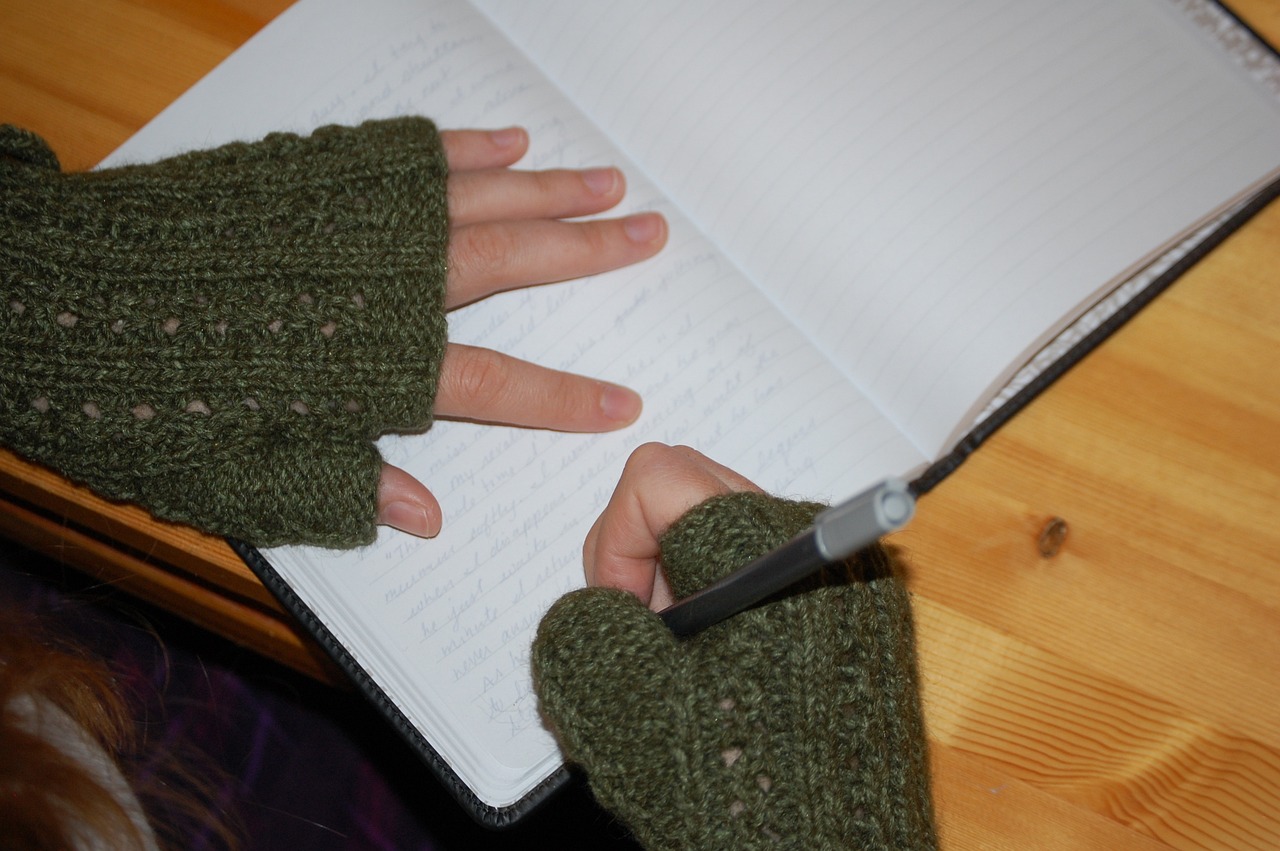
The Role of Art Journals in Creativity
Art journals are like a magical playground for artists, a space where creativity can run wild and free. Imagine stepping into a world where you can let your imagination soar without the fear of judgment. That's exactly what an art journal offers! It’s a blank canvas where you can splash your thoughts, emotions, and inspirations without worrying about the final product. This liberating approach encourages experimentation, allowing artists to explore different mediums, styles, and ideas that they might not otherwise consider.
When you open the pages of an art journal, you’re opening a door to endless possibilities. You can doodle, paint, collage, or even write your thoughts down. It’s a safe haven where you can make mistakes and learn from them. This freedom is crucial for unlocking your creative potential. Why? Because when you remove the pressure to create a masterpiece, you allow yourself to think outside the box. You might find that the most unexpected combinations lead to the most exciting ideas!
Art journaling can also serve as a catalyst for innovation. By regularly committing your ideas to paper, you might stumble upon patterns or themes that you hadn’t noticed before. For instance, if you notice that you often sketch flowers in your journal, you might decide to explore botanical illustration more deeply. This self-discovery can lead to unique artistic expressions that differentiate you from others in the field.
Furthermore, the tactile experience of creating in an art journal is incredibly stimulating. The feel of different materials, the sound of pages turning, and the visual delight of colors and textures all contribute to a rich sensory experience that can spark even more creativity. You might find yourself inspired by the very act of creating, leading you to new ideas and projects that you hadn’t considered before.
To illustrate the impact of art journals on creativity, consider the following key points:
- Encourages experimentation: With no stakes involved, artists can try out new techniques and ideas.
- Facilitates self-discovery: Regular journaling can help uncover your unique artistic voice.
- Inspires innovation: Documenting your creative process can lead to unexpected breakthroughs.
- Enhances sensory engagement: The act of physically creating can stimulate new ideas.
In essence, art journals are not just books filled with art; they are dynamic tools for personal and creative growth. They allow artists to document their journeys, reflect on their experiences, and continuously evolve. So, why not grab a journal today and start your own creative adventure? You never know what incredible ideas are waiting to be unleashed!
Q: How often should I use my art journal?
A: There’s no right or wrong answer! Some artists journal daily, while others prefer to do it weekly or whenever inspiration strikes. The key is to find a rhythm that works for you.
Q: What materials should I use for my art journal?
A: You can use anything from colored pencils, watercolors, and acrylics to collage materials and even digital tools. Experiment with different mediums to see what resonates with you!
Q: Can art journaling help with writer’s block?
A: Absolutely! Art journals can be a great way to break through creative blocks. By shifting your focus from writing to visual art, you can free your mind and allow new ideas to flow.
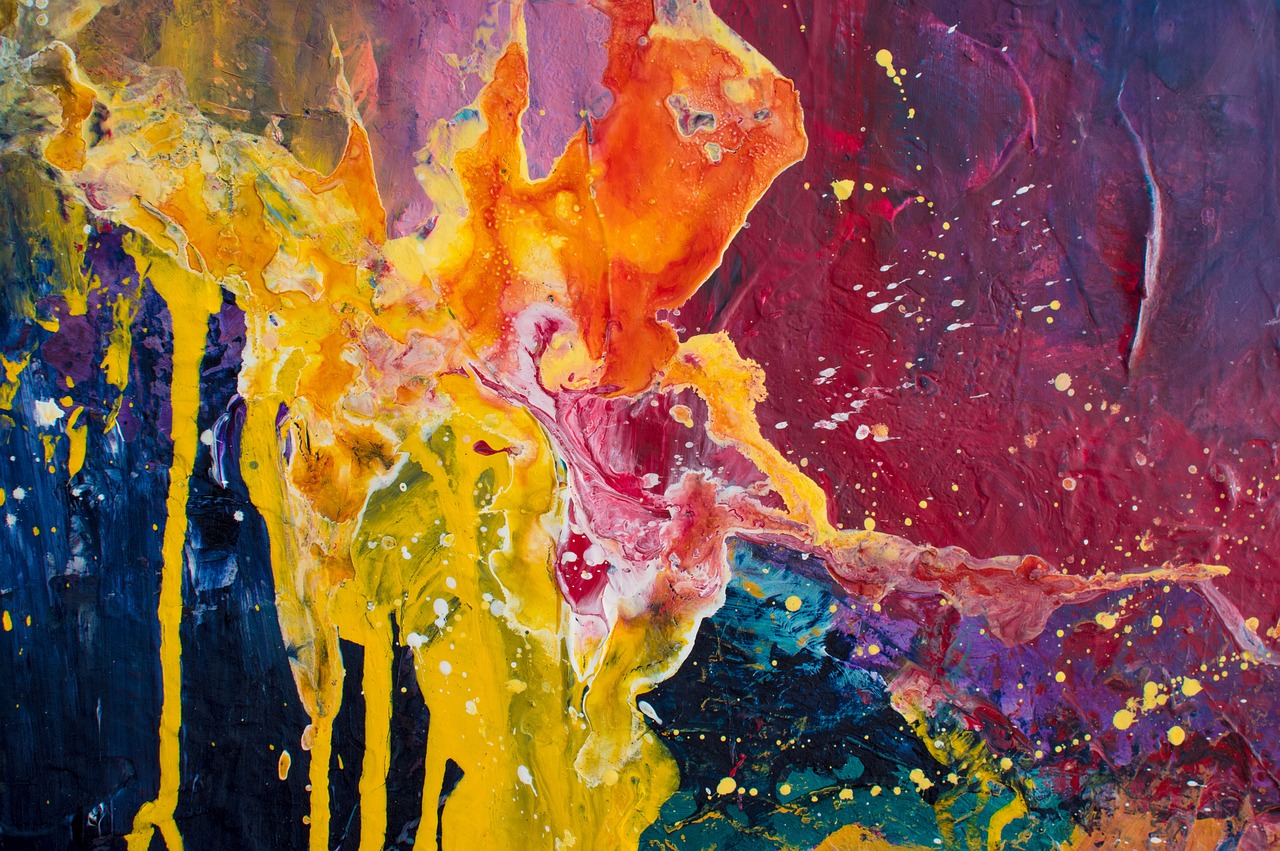
Self-Reflection Through Art Journals
Art journals are not merely collections of sketches or paintings; they are profound tools for self-reflection that can significantly enhance an artist's journey. Imagine opening a book that holds not just your art, but your thoughts, emotions, and experiences laid bare on each page. This intimate space allows artists to process their feelings and explore their inner worlds, leading to a deeper understanding of themselves and their creative impulses.
When artists engage in journaling, they often find that the act of putting pen to paper—or brush to canvas—unlocks a floodgate of emotions and ideas. It’s like having a conversation with oneself, where each stroke reveals a little more about one's psyche. This process can be incredibly therapeutic, serving as a form of emotional release and a way to confront personal challenges. Whether it’s joy, frustration, or confusion, documenting these feelings can help artists gain clarity and insight.
Moreover, art journals serve as a mirror reflecting an artist's growth over time. By revisiting past entries, artists can see how their style has evolved and how their emotional landscape has shifted. This retrospective journey can be enlightening, offering a chance to identify patterns in their work and personal life. For instance, an artist might notice recurring themes in their art that correlate with significant life events, helping them to understand how their experiences shape their creative output.
Incorporating self-reflection into art journaling can be approached in various ways. Here are some techniques that can enhance the reflective process:
- Prompt Questions: Start each journaling session with a prompt question. For example, "What emotions did I feel while creating this piece?" or "What do I want to express through my art?"
- Visual Mapping: Create mind maps that connect your emotions to specific artworks. This can visually represent your journey and help you see connections you might have missed.
- Free Writing: Spend a few minutes writing freely about your day, your art, or your feelings before starting your creative work. This can clear your mind and open up new avenues for expression.
Ultimately, the act of self-reflection through art journals not only fosters personal growth but also enhances artistic insight. It encourages artists to dig deeper, explore their motivations, and refine their voice. By nurturing this practice, artists can transform their journals into a sanctuary of creativity, where every page is a testament to their evolving journey.
Q: How often should I write in my art journal?
A: There’s no strict rule! Some artists prefer daily entries, while others may write weekly or whenever inspiration strikes. The key is consistency in whatever schedule works for you.
Q: Can I mix different mediums in my art journal?
A: Absolutely! Mixing mediums can enhance creativity and lead to unique artistic expressions. Feel free to experiment with paints, collage, sketches, and even written reflections.
Q: What if I feel stuck and can't think of what to write or create?
A: It’s normal to feel stuck sometimes. You can try using prompts, revisiting past works for inspiration, or simply doodling to get the creative juices flowing.
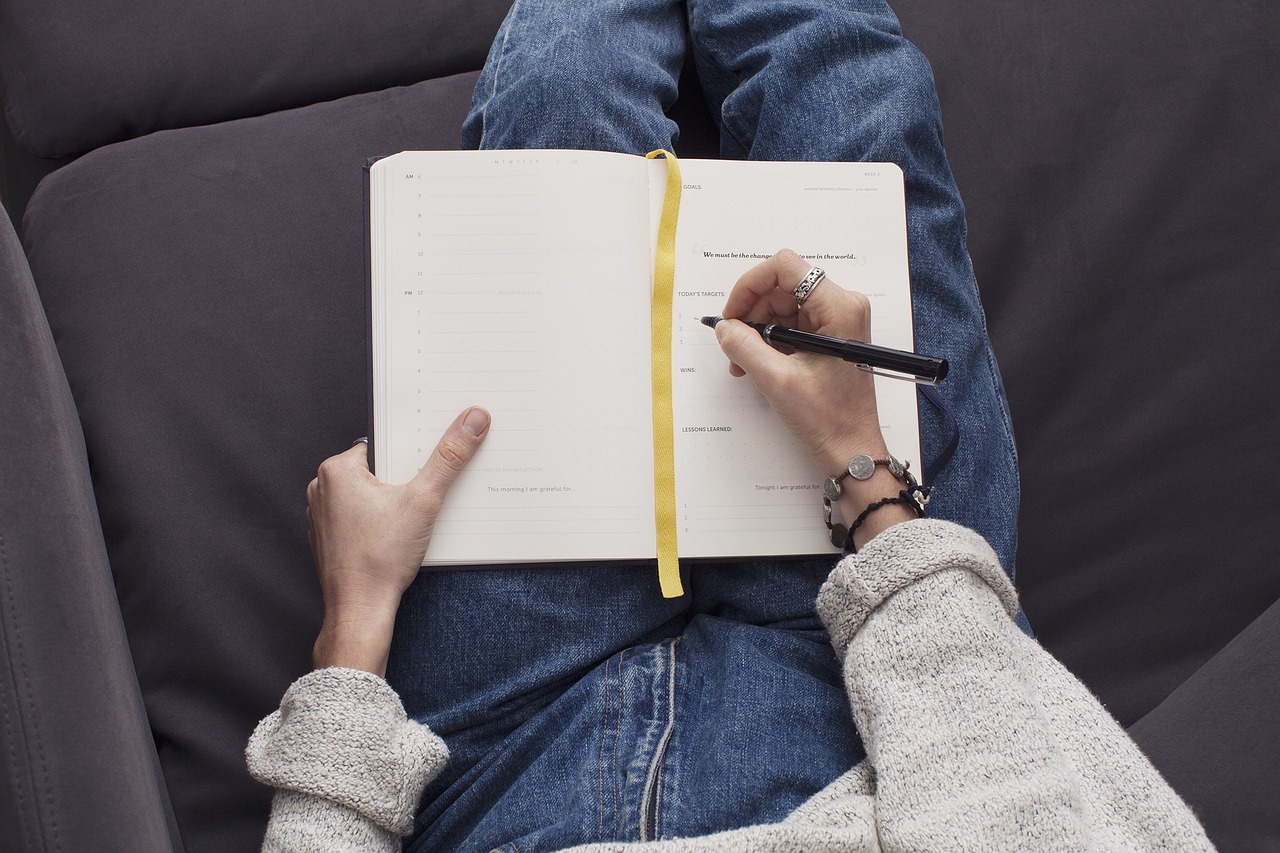
Documenting Artistic Progress
Keeping a record of your artistic journey is not just about saving pretty pictures; it’s about charting your growth as an artist. Think of your art journal as a time capsule, capturing not only your creations but also your thoughts, feelings, and the evolution of your style. Each entry serves as a snapshot of where you were at a particular moment, allowing you to look back and see how far you've come. This reflective practice can be incredibly motivating, especially on days when self-doubt creeps in.
As you document your artistic progress, consider including different elements in your journal. You might want to create a dedicated section for before-and-after comparisons. This could be as simple as taking photographs of your work at various stages or even keeping scraps of your earlier pieces alongside newer ones. By doing this, you can visually track your improvement and recognize patterns in your development.
Another effective way to document your progress is through written reflections. After completing a piece, take a moment to jot down your thoughts about the process. Ask yourself questions like:
- What techniques did I use?
- What challenges did I face?
- How did I overcome them?
- What would I do differently next time?
These reflections not only help you understand your creative process better but also serve as valuable insights for future projects.
Moreover, consider creating a visual timeline of your work. You can do this by dedicating a page or two to showcase your art chronologically. For example, you might set up a table that lists your pieces along with the date created, the techniques used, and any notable achievements or milestones. Here’s a simple example:
| Date | Artwork Title | Medium | Notes |
|---|---|---|---|
| January 2023 | Sunset Bliss | Watercolor | First time using wet-on-wet technique |
| March 2023 | Abstract Dreams | Acrylic | Experimented with color blending |
By maintaining this visual record, you not only celebrate your achievements but also create a roadmap for your future artistic endeavors. It’s like having a personal gallery that evolves with you, reminding you of your past struggles and victories.
In conclusion, documenting your artistic progress is a powerful tool that can significantly enhance your growth as an artist. It encourages self-reflection, helps you recognize your achievements, and keeps you motivated on your creative journey. So, grab that art journal and start chronicling your artistic evolution—you might be surprised at how much you learn about yourself along the way!
- Why should I keep an art journal? An art journal helps you track your progress, reflects your thoughts and feelings, and serves as a creative playground for experimentation.
- What should I include in my art journal? You can include sketches, finished pieces, written reflections, inspiration, and even photographs of your work.
- How often should I update my art journal? It’s beneficial to update your journal regularly, whether that’s daily, weekly, or after completing a project.
- Can I use digital tools for art journaling? Absolutely! Digital platforms can be great for art journaling, allowing for easy organization and sharing of your work.

Setting Goals in Art Journals
Setting goals in art journals is like planting seeds in a garden; it requires intention and care, but the results can be breathtaking. When artists take the time to outline their aspirations, they create a roadmap for their creative journey. This process not only clarifies their artistic vision but also enhances motivation and accountability. Imagine waking up each day with a clear purpose, knowing exactly what you want to achieve in your art. It’s empowering!
To get started, artists can begin by identifying both short-term and long-term goals. Short-term goals might include completing a specific piece of art or experimenting with a new technique, while long-term goals could revolve around mastering a particular medium or preparing for an exhibition. The beauty of art journals is that they provide a safe space to jot down these ambitions without the fear of judgment. You can be as ambitious or as humble as you want; the important thing is to write it down.
Here’s a simple way to structure your goals in your art journal:
- Specific: Clearly define what you want to achieve. Instead of saying "I want to paint more," try "I will complete three watercolor paintings this month."
- Measurable: Make sure your goals are quantifiable. This allows you to track your progress effectively.
- Achievable: Set realistic goals that challenge you but are still attainable. This balance keeps you motivated.
- Relevant: Ensure your goals align with your overall artistic vision and personal growth.
- Time-bound: Establish a timeline for your goals to create a sense of urgency and commitment.
Once you’ve set your goals, it’s essential to revisit them regularly. This not only helps in tracking your progress but also allows for adjustments as your artistic journey evolves. You might find that your initial goals no longer resonate with your current creative state, and that’s perfectly okay. Art is fluid, and so should be your approach to goal-setting.
Another effective strategy is to break down larger goals into smaller, manageable tasks. For instance, if your goal is to create a series of paintings for an exhibition, you can break it down into smaller steps, such as brainstorming ideas, sketching concepts, and allocating time for each painting. Documenting these tasks in your art journal can provide a sense of accomplishment as you check them off one by one.
Incorporating visual elements into your goal-setting process can also enhance creativity. Artists can use their journals to create vision boards or mind maps that visually represent their goals. This not only makes the process more engaging but also stimulates the imagination, allowing for deeper connections with the goals set.
Ultimately, setting goals in art journals is about creating a personal dialogue with yourself. It's a space to dream, reflect, and, most importantly, grow. So grab your journal, let your aspirations flow, and watch as your artistic journey unfolds in ways you never imagined!
Q: How often should I review my goals in my art journal?
A: It's beneficial to review your goals at least once a month. This allows you to assess your progress and make any necessary adjustments.
Q: Can I set non-artistic goals in my art journal?
A: Absolutely! Your art journal is a personal space, so feel free to include any goals that matter to you, whether they are related to your art or personal life.
Q: What if I don't achieve my goals?
A: Don't be discouraged! Art is a journey, and sometimes goals need to be adjusted. Reflect on what you've learned and set new goals that inspire you.

Reflecting on Past Works
Reflecting on past works is like peering into a time capsule of your artistic journey, revealing not only the evolution of your style but also the moments of triumph and struggle that shape you as an artist. By using your art journal to revisit previous creations, you can gain invaluable insights into your growth and development. Each page turned can act as a mirror, reflecting not just the artwork itself but the emotions, thoughts, and techniques that accompanied its creation.
When you take the time to analyze your earlier pieces, you might discover patterns in your work that you weren’t aware of before. Perhaps you notice a recurring theme, a specific color palette that you favored, or a technique that you’ve since abandoned. This retrospective glance can be enlightening, allowing you to understand your artistic voice better and recognize how it has transformed over time. Why is this important? Because understanding your past can help you make more informed choices in your future creations.
Moreover, reflecting on past works can reveal areas where you have improved and areas that may need more attention. For instance, if you notice that your earlier pieces lack depth or composition, you can focus on these aspects in your current and future projects. This kind of self-assessment is crucial for continuous improvement and can lead to breakthroughs in your artistic practice.
Here are some effective ways to reflect on your past works using your art journal:
- Write Notes: Accompany each piece with notes about your thoughts and feelings during its creation. What inspired you? What challenges did you face?
- Sketch Improvements: Create sketches next to your older works illustrating how you would approach them differently now.
- Track Progress: Use a table to compare your earlier works with your latest creations, focusing on elements like technique, emotional expression, and complexity.
For instance, consider creating a simple table to track your progress:
| Artwork Title | Date Created | Techniques Used | Reflection |
|---|---|---|---|
| Sunset Over Ocean | January 2021 | Watercolor, Ink | Color choices were limited; need to explore blending techniques. |
| Mountain Range | March 2022 | Acrylic, Mixed Media | Improved depth and texture; confident use of color. |
This method not only helps you document your artistic journey but also serves as a motivational tool. Each reflection can act as a reminder of how far you’ve come, encouraging you to keep pushing your boundaries and exploring new horizons. So, grab that art journal and start reflecting! Who knows what hidden gems of insight you might uncover?
Q: How often should I reflect on my past works?
A: It's beneficial to reflect regularly, perhaps at the end of each month or after completing a significant project. This will help you stay aware of your growth and areas for improvement.
Q: What should I focus on when reflecting?
A: Focus on your emotional response to the artwork, the techniques you used, and how your style has evolved. Consider what you would do differently now and what you’ve learned.
Q: Can reflecting on past works help me find my artistic voice?
A: Absolutely! Understanding your past helps you identify patterns and preferences, which are key to developing a unique artistic voice.
Q: Should I share my reflections with others?
A: Sharing your reflections can be incredibly beneficial! It opens up discussions, invites feedback, and can provide new perspectives on your work.
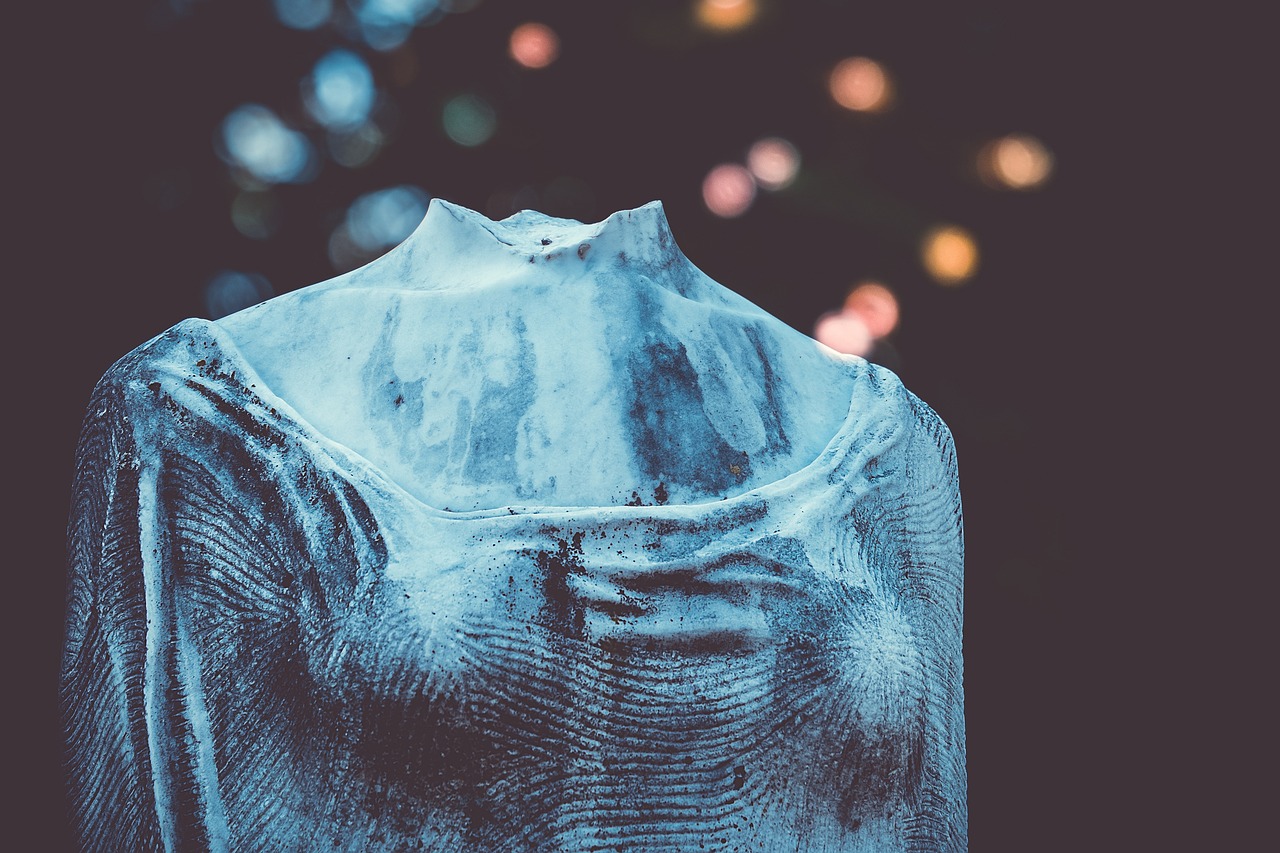
Inspiration and Idea Generation
When it comes to being an artist, finding inspiration can sometimes feel like searching for a needle in a haystack. However, art journals act as a treasure chest, filled with gems of creativity just waiting to be discovered! By regularly jotting down thoughts, doodles, and snippets of inspiration, artists can cultivate a rich resource of ideas that can be tapped into whenever the creative well runs dry. Imagine your art journal as a garden; the more you nurture it, the more it blooms with vibrant ideas and innovative concepts.
One of the most effective ways to gather inspiration in your art journal is by creating a dedicated section for idea generation. This could include:
- Visual References: Clip images from magazines, print photos from the internet, or even sketch what you see around you. These visuals can ignite new ideas and help you visualize your artistic direction.
- Quotes and Thoughts: Write down quotes that resonate with you or thoughts that spark your imagination. Sometimes, a single phrase can lead to an entire series of artworks!
- Color Palettes: Experiment with color combinations that catch your eye. Use swatches of paint or colored pencils to create a palette that inspires your next piece.
Moreover, don't underestimate the power of free writing. Allow yourself to write without any constraints—this stream-of-consciousness technique can lead to unexpected ideas and insights. You might find that your words begin to weave into themes or concepts that can later be translated into visual art. Keep your pen moving, and let your thoughts flow onto the page!
Another technique for generating inspiration is to engage in collaboration. Share your journal with fellow artists or friends and ask for their input. Sometimes, a fresh set of eyes can uncover potential that you may not have seen. You could even consider hosting an art journaling session where everyone brings their journals and shares ideas. The energy and creativity in the room can be contagious, sparking new ideas that you can then explore in your own work.
Lastly, remember to embrace the serendipity of accidental discoveries. Sometimes, the best ideas come from mistakes or unintended outcomes. If you spill paint or accidentally tear a page, don’t panic! Instead, see it as an opportunity to adapt and create something new. These happy accidents can lead to unique artistic expressions that you might have never considered otherwise.
In conclusion, your art journal is more than just a collection of sketches and notes; it’s a dynamic tool for inspiration and idea generation. By actively engaging with it and experimenting with various techniques, you can unlock a world of creativity that propels your artistic journey forward. So grab your journal, let your imagination run wild, and watch as your ideas flourish!
Q: How often should I use my art journal?
A: There's no set rule! Some artists prefer daily journaling, while others might do it weekly. The key is consistency and making it a regular part of your creative process.
Q: What materials should I use in my art journal?
A: You can use anything from traditional sketching materials like pencils and watercolors to mixed media elements such as collage materials, fabric, and even digital elements. Choose what resonates with you!
Q: Can I use my art journal for non-artistic purposes?
A: Absolutely! Many artists use their journals for brainstorming, planning projects, or even writing down personal reflections. It’s your space to express anything you like.
Q: What if I feel stuck and can't think of anything to create?
A: When you feel stuck, try flipping through your previous entries for inspiration or engage in a quick sketching exercise. Sometimes, simply starting with a random doodle can spark new ideas.

Techniques for Effective Art Journaling
When it comes to art journaling, the techniques you employ can make all the difference in how effectively you express your creativity. Think of your art journal as a canvas for your thoughts, emotions, and artistic experiments. The beauty of art journaling lies in its flexibility; there are no rules, only opportunities to explore and innovate. One of the most effective techniques is to embrace mixed media approaches. By combining various materials—such as paint, collage, and even digital elements—you can create a rich tapestry of textures and colors that reflect your unique vision. Imagine layering a watercolor wash beneath a collage of magazine cutouts; the interplay of materials can lead to unexpected and delightful outcomes.
Another powerful technique is establishing daily journaling practices. Just like any skill, consistency is key in developing your artistic voice. Setting aside time each day, even if it's just for 10 or 15 minutes, can significantly boost your creativity. You might start with simple sketches or doodles, gradually moving on to more complex ideas as you feel more comfortable. The important thing is to create a habit that allows your creativity to flow freely. Think of it as a workout for your artistic muscles—over time, you'll notice a marked improvement in your skills and confidence.
To further enhance your art journaling experience, consider incorporating thematic prompts. These can serve as a springboard for your creativity, guiding you to explore specific ideas or emotions. For instance, you might dedicate a week to "nature" and fill your journal with sketches, collages, and writings inspired by the great outdoors. This focused approach can help you delve deeper into your subject matter, leading to richer and more meaningful artwork.
Moreover, don't underestimate the power of reflection. After completing a journal entry, take a moment to look back and analyze your work. What did you enjoy about the process? What challenges did you face? This reflective practice can illuminate patterns in your creativity and help you identify areas for growth. You might even consider creating a dedicated section in your journal for these reflections, allowing you to track your artistic evolution over time.
Lastly, remember that your art journal is a personal space. Don't be afraid to experiment with different styles and techniques. Whether it's trying out new mediums or playing with unconventional layouts, the key is to allow yourself to be vulnerable and open to discovery. Your art journal should be a sanctuary where you can express your innermost thoughts and ideas without the fear of judgment. So grab your supplies, unleash your imagination, and let your art journal become a vibrant testament to your creative journey!
- What materials do I need for art journaling? You can start with basic supplies like a sketchbook, pencils, paints, and glue. As you progress, you might want to experiment with different mediums like pastels, markers, or even digital tools.
- How often should I journal? While there's no set rule, establishing a routine—whether daily, weekly, or whenever inspiration strikes—can help you stay engaged and develop your skills.
- Can art journaling help improve my artistic skills? Absolutely! Regular practice allows you to experiment, reflect, and grow as an artist, ultimately enhancing your technical abilities and creative expression.
- What if I don't know what to create? That's completely normal! Using prompts or themes can help spark ideas. You can also simply doodle or free-write until something inspires you.

Mixed Media Approaches
When it comes to unleashing your creativity, in art journaling can be a game changer. Imagine standing in front of a blank canvas, but instead of feeling paralyzed by the fear of making the first mark, you feel an exhilarating rush of possibilities. Mixed media allows you to combine various materials and techniques, creating a vibrant tapestry of textures, colors, and forms that can evoke emotions like nothing else. It’s like throwing a party for your artistic instincts, where each medium is an invited guest, bringing its unique flair to the celebration.
So, what exactly does mixed media entail? It can include anything from traditional paint and ink to unconventional materials like fabric, paper, found objects, or even digital elements. The beauty of mixed media is that there are no hard and fast rules. You can layer paints, collage papers, and incorporate textures to create a piece that is uniquely yours. This freedom not only enhances your artistic expression but also serves as a fantastic way to explore new ideas and techniques without the pressure of a final outcome.
To effectively incorporate mixed media into your art journaling, consider the following approaches:
- Layering: Start with a base layer of paint, then add collage elements, and finish with ink or markers. Each layer adds depth and interest.
- Texture: Use materials like fabric, sand, or even household items like bubble wrap to create unique textures that draw the viewer in.
- Color Play: Experiment with different color palettes and see how they interact with one another. Mixed media allows you to blend colors in ways that can surprise and delight.
One of the most exciting aspects of mixed media is the element of surprise. You might start with a clear vision, but as you layer different materials, your artwork can take unexpected turns. This unpredictability can lead to some of your most profound artistic moments. It’s like a conversation between you and your materials, where both parties contribute to the final piece.
Moreover, mixed media can be incredibly therapeutic. The act of tearing paper, smearing paint, or layering textures can be a stress-reliever, allowing you to lose yourself in the process. It encourages a playful attitude towards art-making, reminding you that it’s not just about the end product but also about the journey. Whether you’re feeling joyful, contemplative, or even frustrated, your art journal becomes a safe haven to express those emotions through various mediums.
In conclusion, embracing mixed media in your art journaling practice can significantly expand your creative horizons. It invites you to break free from traditional boundaries and explore the vast landscape of artistic expression. So grab your favorite materials, dive into your journal, and let the magic of mixed media transform your artistic journey!
Q1: What materials can I use for mixed media art journaling?
A1: You can use a wide variety of materials including paints, inks, papers, fabrics, found objects, and even digital elements. The key is to experiment and find what resonates with you.
Q2: Do I need to have experience to start mixed media journaling?
A2: Absolutely not! Mixed media is all about exploration and creativity. There are no rules, so feel free to dive in regardless of your experience level.
Q3: How can mixed media enhance my artistic skills?
A3: By experimenting with different materials and techniques, you can develop a deeper understanding of color, texture, and composition, which can significantly enhance your overall artistic skills.
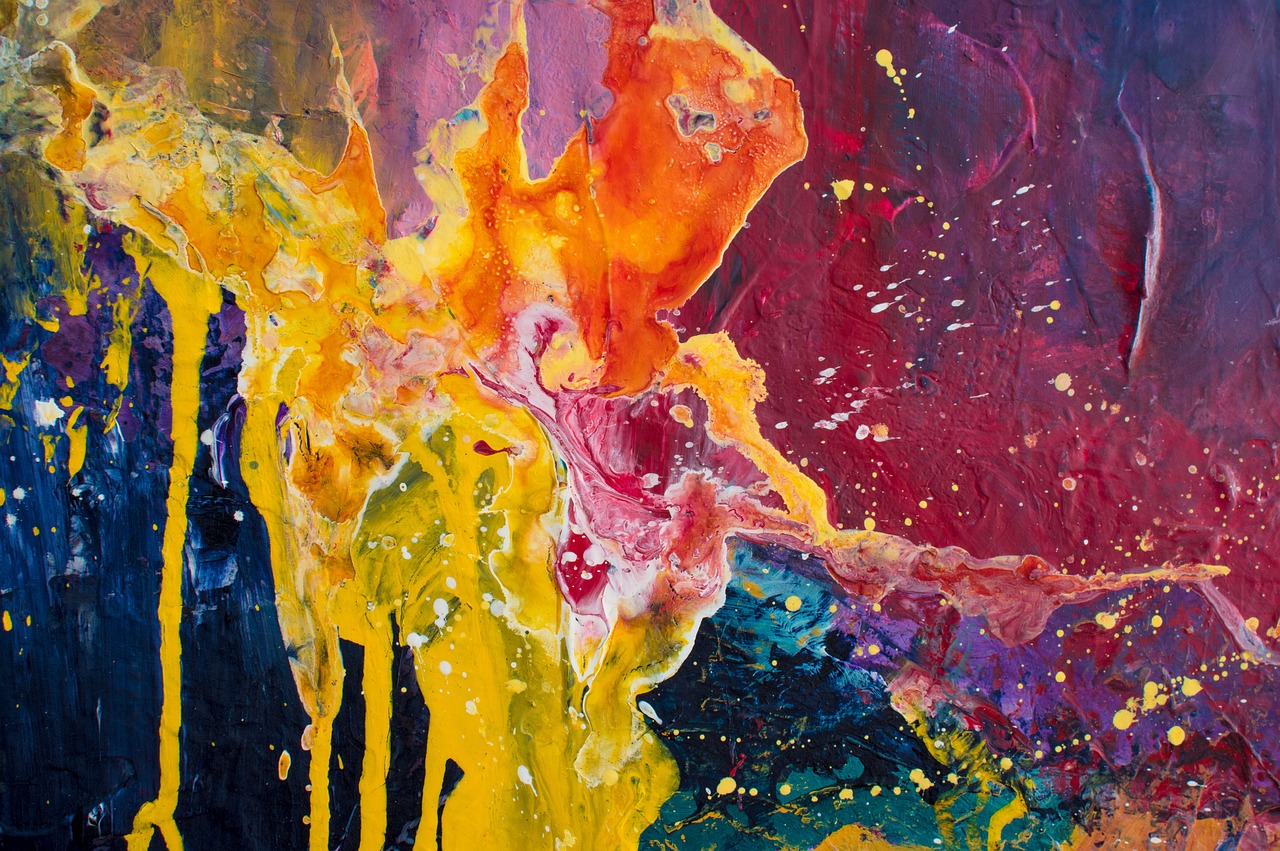
Daily Journaling Practices
Establishing a daily journaling routine can be a game-changer for artists looking to boost their creativity and refine their skills. Imagine waking up each day and having a blank canvas waiting for your thoughts, ideas, and emotions. It’s like having a personal playground where you can express yourself freely without the fear of judgment. By committing to this practice, you not only cultivate your artistic voice but also create a sanctuary for your imagination to roam wild.
So, how can you make daily journaling a habit? First, consider setting aside a specific time each day dedicated solely to your art journal. This could be in the morning with your coffee, during your lunch break, or even before bed. The key is consistency. When you treat this time as an appointment, it becomes easier to stick to it. You might find it helpful to create a cozy space filled with your favorite supplies—paints, markers, or even just a simple pen and paper. This environment can inspire you and make the process feel special.
To get started, you might want to incorporate a few simple practices into your daily journaling routine:
- Free Writing: Spend a few minutes writing whatever comes to mind. This stream-of-consciousness technique can help clear your mental clutter and spark new ideas.
- Sketching: Don’t worry about creating a masterpiece. Just doodle or sketch whatever inspires you in the moment. This can be anything from a scene outside your window to abstract shapes that pop into your head.
- Reflection: Take time to reflect on your day or your artistic journey. What did you learn? What challenges did you face? This reflection can deepen your understanding of your growth as an artist.
Additionally, you might consider creating a visual diary within your art journal. This could include photographs, clippings, or even fabric swatches that resonate with you. By integrating different materials, you not only enhance the visual appeal of your journal but also create a multi-sensory experience that can trigger memories and emotions, enriching your artistic expression.
Remember, the goal of daily journaling is not perfection; it’s about exploration and growth. Allow yourself the freedom to experiment without constraints. If you miss a day, don’t beat yourself up about it. Just pick up where you left off, and keep the momentum going. In time, you’ll likely discover that this practice not only enhances your creativity but also helps you develop a deeper connection to your art and yourself.
Incorporating daily journaling practices into your routine can be incredibly rewarding. As you consistently engage with your journal, you may find that your creativity flourishes, your skills improve, and your artistic voice becomes more defined. So grab that journal, let your thoughts flow, and watch as your artistic journey unfolds in beautiful, unexpected ways!
Q: How long should I spend on my art journal each day?
A: Even 10-15 minutes can be beneficial. The key is consistency rather than duration.
Q: What if I feel stuck and don’t know what to write or draw?
A: Start with free writing or doodling. Sometimes just putting pen to paper can unlock new ideas.
Q: Can I use digital tools for my art journal?
A: Absolutely! Digital journaling can be just as effective. Use apps that allow sketching and writing.
Q: What materials should I use for my art journal?
A: Use whatever you feel comfortable with! This could be pens, pencils, watercolors, or even mixed media items.
Frequently Asked Questions
- What is an art journal and why is it important for artists?
An art journal is a personal space where artists can freely express their thoughts, ideas, and creativity. It serves as a playground for experimentation, allowing artists to explore new techniques and styles without the fear of judgment. This process is crucial for artistic growth as it encourages self-reflection and innovation.
- How can art journals enhance creativity?
Art journals unlock creativity by providing a safe environment for artists to try out new ideas and approaches. They can doodle, sketch, or write without any pressure, which often leads to unexpected discoveries and breakthroughs in their artistic journey.
- Can art journaling help with emotional processing?
Absolutely! Art journaling is a therapeutic tool that allows artists to process their emotions and thoughts. By visually documenting their feelings, artists gain insights into their inner world, fostering personal growth and emotional healing.
- How can I document my artistic progress in my journal?
Documenting progress can be done by regularly adding sketches, completed works, and reflections on your artistic journey. Over time, you'll be able to visually see how your skills and style have evolved, which can be incredibly motivating.
- What are some effective goal-setting strategies for art journaling?
Setting goals in your art journal can be as simple as writing down what you want to achieve, whether it’s mastering a new technique or completing a series of paintings. Regularly reviewing these goals and tracking your achievements can help keep you motivated and accountable.
- How can I find inspiration for my art through journaling?
Art journals are perfect for collecting inspiration! You can include sketches, quotes, color palettes, and even clippings from magazines. Over time, these collected ideas can serve as a valuable resource for future projects.
- What techniques can I use to make my art journaling more effective?
Experimenting with mixed media, incorporating daily journaling practices, and trying out different styles can enhance your art journaling experience. The key is to keep it fun and varied, allowing for creativity to flourish.
- Is it necessary to journal every day?
While daily journaling can boost creativity, it’s not a strict requirement. Find a routine that works for you—whether it’s daily, weekly, or whenever inspiration strikes. The important part is to make it a regular practice that feels rewarding.



















